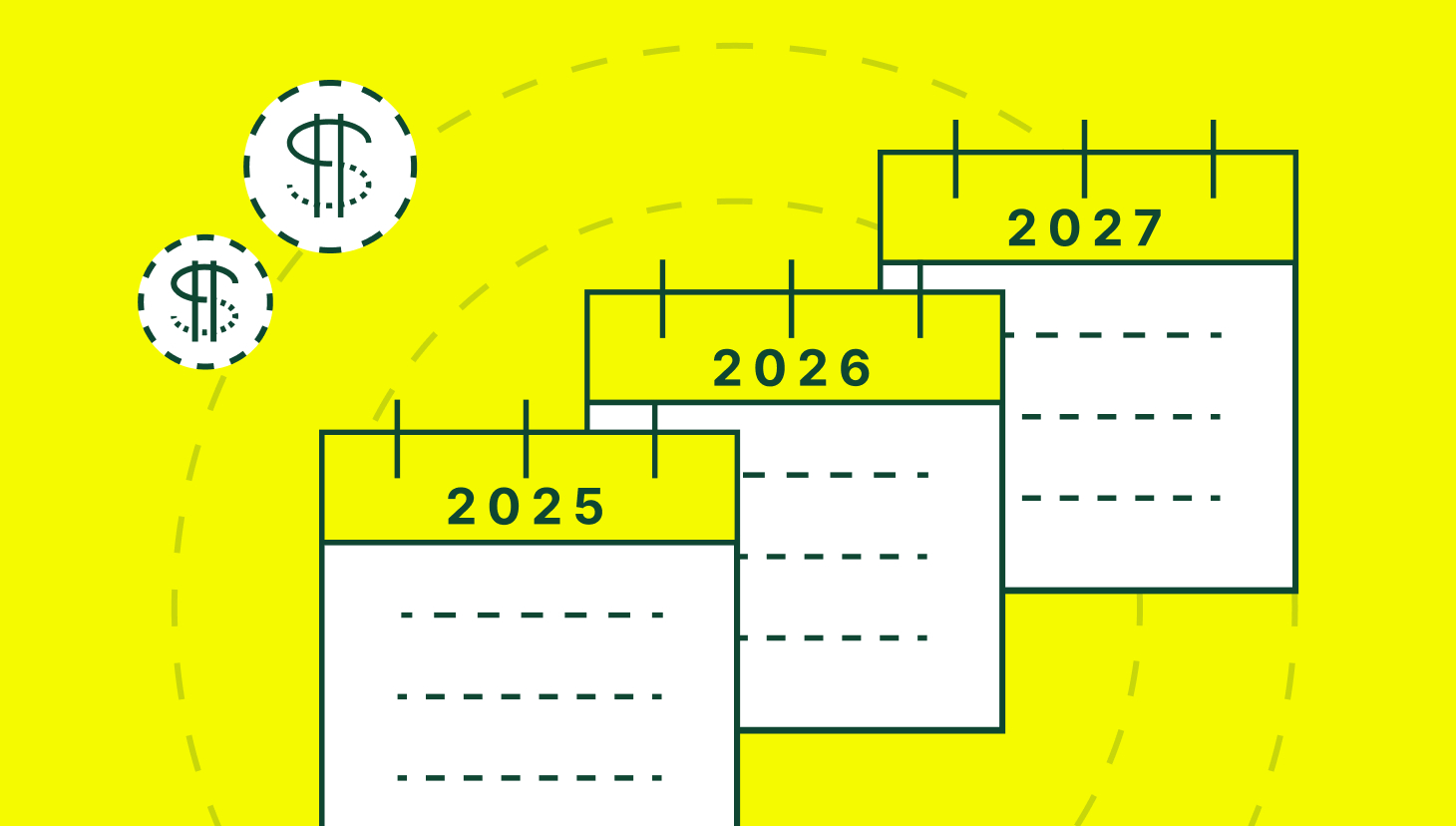Compensation plans are used to incentivize selling behaviors and impact the bottom line.
This is true regardless of an organization’s stage, size, or industry.
However, the components of a comp plan should vary according to how large a sales team is and the business’s key goals.
For instance, we often design compensation plans for startups to attract talent, take risks, and drive rapid growth. These might include bounty bonuses or logo commissions, rewarding reps for winning top accounts from a specific industry or region. We also see startups implement single-rate comp plans as their first ones for simplicity and lack of available historical data.
But for high-growth and larger sales teams, comp plans are modeled off lots of data tied to previous years’ performances and financial forecasts.
Try the most collaborative solution to manage, track and payout variable compensation. Calculate commissions and pay your team accurately, and on time.
Start TrialThese comp plans are methodical, emphasize predictable revenue, tie in various metrics beyond annual recurring revenue (like customer lifetime value), and define clear divisions and pay scales between reps’ skill levels and roles within their teams.
Overall, compensation plans for larger SaaS sales organizations are more sophisticated, data-driven, and focused on achieving long-term, sustainable growth.
| Feature | Startups | Larger Sales Teams |
| Focus | Growth, New Customers | Profitability, Deal Size |
| Risk/Reward | Higher commission %, Equity | Higher base salary, Lower commission % |
| Structure | Flexible, Adaptable | More complex, Tiered |
| Maturity | Simpler plans | Well-defined, Standardized by role |
They’re more complex. And those complexities can become so overbearing that they actually deter from your compensation strategy versus support it.
So, to keep those complexities in line, we came up with five comp plan best practices.
5 Comp Plan Best Practices for Larger Sales Teams
1. Don’t copy and paste a plan from an existing org.
First, no matter how tempting, do not bring a comp plan that worked well at your previous organization into your new one.
Sure, bring in certain elements that apply at scale, like accelerators and multi-year contract bonuses. But copying and pasting a complete comp plan from a different business will cause a lot more headaches than the shortcut you took in place of developing a unique plan.
Establish your business’s key business objectives, then, build a plan that aligns to these goals and drives selling behaviors that push these objectives.
The best compensation plans are living documents. They should be reviewed and adjusted regularly to reflect changes in the market, your business goals, and your sales team’s needs. By establishing a culture of continuous improvement and data-driven decision-making, you can ensure your compensation plan effectively attracts, motivates, and retains top sales talent.
2. Implement tiered commission structures
As much as we love the single-tier, flat-rate commission structure for startups or plans that support a new product or territory, avoid using these for more established teams.
Instead, implement comp plans with multiple commission tiers based on performance levels to incentivize high achievers. You might also recognize the term “accelerator” for this.
The more volume sold, the higher the commission rate paid.
For example, a rep earns 10% on the first $100,000 in sales, 15% on the next $100,000 in sales, and 20% on any sales exceeding $200,000 — no cap.
You could also consider adding cliffs or commission floors to your account manager/customer success roles and leadership compensation plans, which set a minimum performance threshold before commissions are rewarded.
3. Build a transparent communication plan
Since larger sales teams typically have more complicated compensation plans (splits, team volatility, draws, multiple products, etc.), your communication plan when rolling out compensation plan changes is paramount.
This includes gathering feedback from reps during plan design, introducing early on that changes are incoming, dedicating team meetings specific to comp plans (and supported by 1:1s), accessible documentation, and a source of truth for all things sales compensation.
Multiple Communication Channels: Don’t rely on a single announcement. Utilize a variety of channels like town hall meetings, team huddles, email communication, and an internal knowledge base to ensure everyone receives the information.
Focus on Benefits: While outlining the details is important, emphasize the positive aspects of the changes and how they benefit the sales team. Highlight potential earning opportunities and incentives to keep reps motivated.
Openness to Feedback: Encourage questions and feedback from your sales team. Schedule one-on-one meetings or open forums to address concerns and ensure everyone feels heard. By fostering a two-way dialogue, you can identify potential areas for improvement and refine the plan as needed.
Remember, even with its complexities, a well-communicated compensation plan can maintain or build trust with your team and motivate your sellers.
4. Leveraging technology for goal setting and tracking
To help with all of this — recruit the help of technology.
Today’s software offers can streamline these compensation processes and empower both sales reps and leadership when implemented correctly. For example, platforms like HubSpot’s CRM offer built-in task management features so you can clearly assign responsibilities, while its unified reports let you cross-reference each team member’s activity with actual results.
Tools like QuotaPath, for instance, can enhance goal alignment by giving everyone a place to check the organizational-wide goals and their contributions toward those goals.
Plus, this real-time visibility and insight allows reps and managers to adjust their deal approaches on the fly to coach, motivate, and support where needed. Another benefit of this is the accountability it creates to give reps ownership over their earnings.
Lastly, compensation performance data can help you identify flags with your compensation strategy, underperformers (and over performers), outlier deals, and more so that you can adjust and allocate resources where necessary.
What to look for in goal setting and tracking technology:
- Flexible Goal Setting: The platform should allow for setting individual and team goals, with customizable metrics and targets that align with your specific sales objectives.
- Real-Time Dashboards: Easy-to-understand dashboards should provide real-time insights into key performance indicators (KPIs) and progress towards goals.
- Progress Tracking and Reporting: The tool should offer features for tracking progress over time, generating reports, and identifying trends for informed decision-making.
- Integration with CRM Systems: Seamless integration with your CRM system ensures data accuracy and eliminates the need for manual data entry.
By leveraging technology for goal setting and tracking, you can empower your sales team to take ownership of their performance, hold themselves accountable, and ultimately achieve greater sales success.
5. Adjust your plans throughout the year
Additionally, remember comp plans rarely succeed for the entire year if they stay the same.
Businesses operate in dynamic environments. Market conditions can shift, competitor strategies can evolve, and your sales goals might need adjustments. To ensure your compensation plan remains effective, be prepared to adapt it throughout the year.
Here are some data points to monitor:
- Hit Rates: Are your reps consistently achieving or exceeding their quotas? Extremely high or low hit rates might indicate quotas that are too easy or too difficult, requiring adjustments to ensure a healthy challenge and achievable goals.
- Average Deal Size: Is the average deal size meeting expectations? If reps are consistently closing smaller deals than anticipated, commission structures might need to be reviewed to incentivize pursuing larger deals that contribute more to overall revenue goals.
- Sales Cycle Length: Is the sales cycle taking longer than expected? This could indicate a need for additional sales enablement or adjustments to the compensation plan to incentivize faster deal velocity.
- Employee Turnover: High turnover rates within your sales team could be a sign that your compensation plan is uncompetitive or doesn’t adequately motivate reps. Analyze data and conduct exit interviews to identify areas for improvement in your plan’s structure and offerings.
By regularly monitoring these data points and incorporating feedback, you can maintain a dynamic compensation plan that adapts to changing circumstances and optimizes sales performance throughout the year. This ensures your plan remains a valuable tool for attracting, motivating, and retaining top sales talent.

How to Motivate Sales Team
70% of RevOps, Sales, and Finance leaders said their comp plans motivate reps. What about the other 30%?
Take Me to BlogBonus Best Practices
While the core elements discussed above provide a solid foundation, here are some additional best practices to consider:
- Alignment is Key: Ensure your compensation plan directly aligns with your overall business goals. This creates a clear link between rep performance and achieving company objectives.
- Motivate Through Incentives: Go beyond base salary and commission. Consider implementing sales contests and incentive programs to motivate your team and drive specific sales behaviors. Strategic use of contests can be a powerful tool for boosting performance.
- Strategic Spiffs: Supplement your core compensation plan with strategic spiffs (Sales Performance Incentive Funds). These targeted rewards can incentivize specific actions that support your sales goals.
- Feedback is Essential: Don’t operate in a vacuum. Regularly gather feedback from your sales team on the effectiveness of your compensation plan. This feedback allows you to identify areas for improvement and ensure the plan remains relevant and motivating.
By incorporating these additional best practices, you can create a truly effective sales compensation plan that attracts top talent, drives exceptional performance, and contributes to achieving your overall business objectives.
Design, track, and manage variable incentives with QuotaPath. Give your RevOps, finance, and sales teams transparency into sales compensation.
Talk to SalesAlign Your Compensation Plans Now
Aligning compensation plans with company goals can be a complex tightrope for large companies.
Setting goals that balance short-term wins (like quarterly quotas) with long-term objectives (building customer loyalty and recurring revenue) can be tricky. Traditional commission structures that reward only new sales might discourage reps from investing in existing accounts, hurting renewal rates.
Additionally, ensuring fair and adaptable plans can be challenging with complex sales teams and ever-changing markets.
That’s where QuotaPath comes in.
By leveraging data and analytics, QuotaPath helps build compensation plans that incentivize the right behaviors. It can track performance against multi-faceted goals, including customer lifetime value metrics. This allows companies to reward reps for upselling, renewals, and other actions that drive long-term growth, aligning their efforts with company objectives.
QuotaPath also fosters transparency and fairness by providing clear commission structures and performance dashboards to drive sales performance. With QuotaPath’s help, large companies can bridge the gap between compensation plans and company goals, motivating their sales teams for long-term and consistent success.
Talk to Sales today to learn more.



